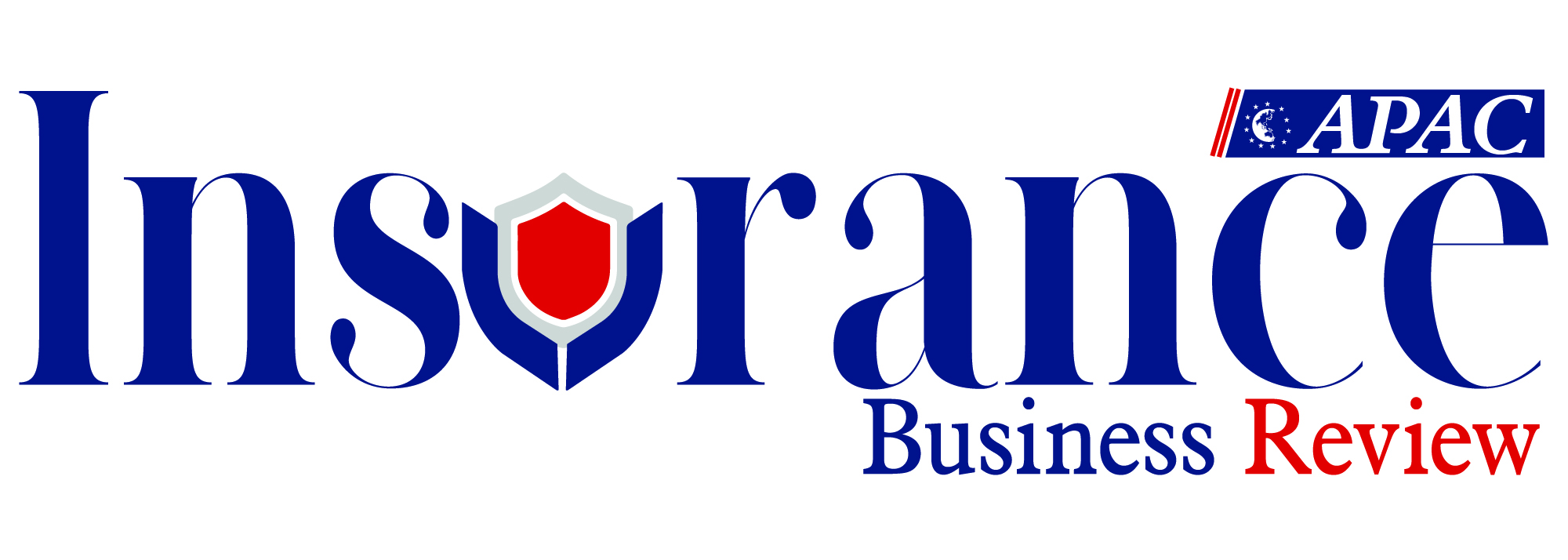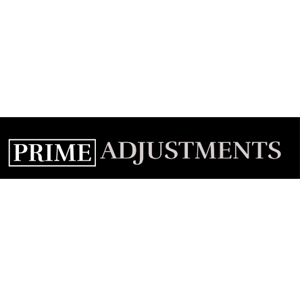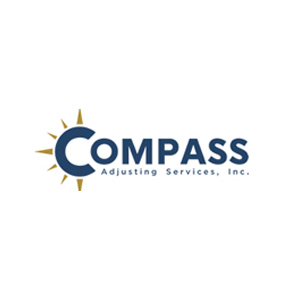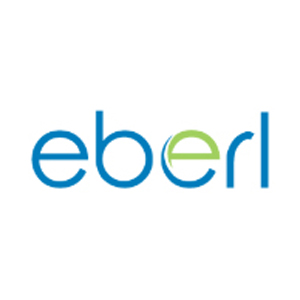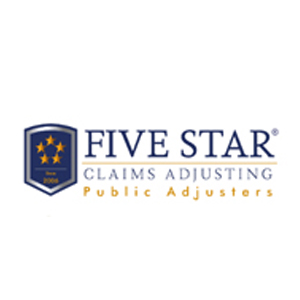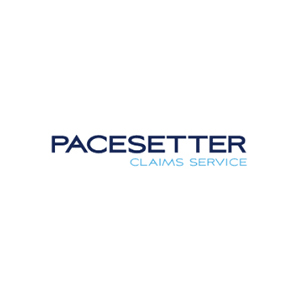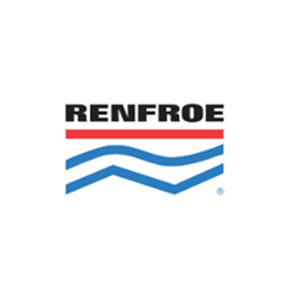\\\\\\\\\\ Top Companies In Claims Management Services \\\\\\\\\
-
Noble Public Adjusting Group
Noble Public Adjusting Group is a nationally recognized leader in insurance claims advocacy, representing policyholders in their fight for fair compensation after property damage. Founded by Marine veteran Bo Williamson, Noble specializes in policy analysis, damage assessment, negotiation strategy and transparent claims handling, shifting power back to the insured.
-
Prime Adjustments
Prime Adjustments is a boutique public adjusting firm that exclusively represents policyholders. They provide expert guidance, thorough claim management and strategic advocacy to simplify complex insurance claims and secure fair settlements for residential, commercial, multi-family and municipal clients.
-
Compass Adjusting Services
Compass Adjusting Services is a national independent adjusting firm specializing in both personal and commercial property claims, including catastrophe and daily losses. Known for its prompt, high-quality claims handling, Compass provides seamless integration, expert staffing, and innovative technology to meet clients' needs efficiently.
-
Eberl
Eberl is a trusted provider of customizable claims solutions, offering tech-empowered, compassion-driven services for catastrophe and daily claims. With a vast network of adjusters and a commitment to quality, Eberl delivers exceptional customer experiences while maintaining long-term partnerships with clients.
-
Five Star Claims Adjusting
Five Star Claims Adjusting is one of Florida's largest public adjuster firms, specializing in representing policyholders to ensure fair settlements. With extensive experience, it helps clients navigate complex claims, maximize insurance benefits, and recover millions in insurance proceeds for residential and commercial property damage.
-
Pacesetter Claims
Pacesetter Claims Service is a trusted provider of customizable property claims adjusting solutions, specializing in catastrophe, daily, and desk adjusting. Known for its experienced team, top-tier training, and commitment to quality, Pacesetter delivers fast, compassionate, and innovative claims services nationwide.
-
Renfroe
E.A. Renfroe & Company® is a privately held, family-owned claims solutions provider specializing in customizable claim handling services. With a nationwide workforce, the company excels in disaster response, claims overflow, and administrative support, offering expert resources and world-class adjuster development.
More in News
The Role of Independent Insurance Agencies in Simplifying Car Insurance Services for Consumers
Friday, November 28, 2025
Fremont, CA: Navigating automotive insurance can be challenging, but independent insurance agencies offer a robust solution for streamlining this endeavor. In contrast to captive agents, who are affiliated with a singular insurance provider and are restricted to selling that company's policies, independent agents collaborate with multiple insurers. This enables them to serve as a personal advisor and advocate for the consumer, thereby simplifying the acquisition and administration of automotive insurance. Tailored Policies and Personalized Advice Independent agents possess a comprehensive understanding of the market, enabling them to excel at identifying bespoke coverage solutions for diverse circumstances. They are adept at navigating intricate scenarios, such as insuring a classic or high-performance vehicle, or securing a policy for a driver with a less-than-perfect driving history. They can also pinpoint niche insurers offering more advantageous rates or specialized coverage for unique situations. Beyond merely procuring a policy, an independent agent serves as a trusted advisor, elucidating intricate details and clarifying essential terminology, including deductibles, liability limits, and the distinctions between comprehensive and collision coverage. This personalized education ensures that clients are not merely acquiring a policy, but a plan that genuinely safeguards each individual's interests. A Partner for Life, Not Just a Transaction The collaboration with an independent agent extends significantly beyond the initial transaction. They evolve into a sustained partner in overseeing insurance requirements. Should every premium escalate upon renewal, the agent can quickly and easily secure a more favorable rate, ensuring the continuous presence of a dedicated agency. This uninterrupted engagement ensures the constant presence of a dedicated specialist advocating on behalf of every individual. An independent agent functions as a vital advocate throughout the claims process. In the event of an accident, the agent can assist with filing a claim, serve as a liaison with the insurance company, and provide guidance through the often complex documentation process. Their assistance can prove invaluable, ensuring the claim is processed efficiently and equitably. Independent insurance agencies provide a vital human element in the often impersonal and complex domain of automotive insurance. Through an extensive selection of options, customized guidance, and a dedication to enduring client relationships, they streamline the car insurance acquisition process. Their role extends beyond mere product sales; they deliver a comprehensive service, serving as personal advocates within the intricate insurance landscape. For consumers seeking transparency, ease, and a genuinely competitive rate, the independent agent offers a more intelligent and straightforward method to obtain essential automotive protection.
Steering Through Risks with the Essential Benefits of Marine Insurance
Friday, November 28, 2025
FREMONT, CA: In the vast and unpredictable realm of maritime trade, marine insurance acts as a beacon of protection, offering comprehensive coverage against the perils of the sea. Mitigating Maritime Risks The primary benefit of marine insurance is its capacity to mitigate risks. Marine insurance provides a safeguard, ensuring that shipowners and cargo handlers can conduct their operations with the assurance that their vessels and goods are protected against a spectrum of maritime dangers. Financial Stability in Turbulent Waters Marine insurance policies offer a lifeline of financial security. The financial repercussions of loss or damage to ships or cargo can be devastating. Marine insurance acts as a bulwark against such financial strain, offering compensation covering repair costs, lost cargo, and liability claims. Facilitating Global Trade Marine insurance is not merely a protective measure but a catalyst for international trade. By providing transit goods coverage, marine insurance enhances the confidence of exporters and importers, encouraging trade flow across borders. It is an indispensable tool for businesses engaged in the global marketplace, where the assurance of coverage can mean the difference between a deal secured and an opportunity lost. Customizable Coverage for Diverse Needs The versatility of marine insurance lies in its customizable nature. Policies can be tailored to the insured's specific needs, whether for a single voyage or an open cover for multiple shipments. This flexibility allows businesses to choose the level of coverage that aligns with their risk profile and financial capabilities. Protection Beyond the Sea While the term 'marine' evokes images of the ocean, marine insurance extends its coverage beyond the blue horizon. It encompasses all modes of transportation, safeguarding goods transported by air, land, and rail. This comprehensive approach ensures that from the point of origin to the final destination, the value of the cargo is protected. Efficient Claims Settlement Claims settlement efficiency is paramount after a maritime incident. Marine insurance providers are equipped to handle claims with expertise, ensuring businesses can recover from losses swiftly and resume operations with minimal disruption. Risk Assessment and Management Marine insurance also plays a role in risk assessment and management. Insurers often provide expert evaluations of potential risks, advising on best cargo handling and transportation practices. This proactive approach to risk management can prevent losses before they occur, contributing to a safer and more secure trading environment.
Microinsurance and Financial Inclusion – New Frontiers for Impact in Canada
Thursday, November 27, 2025
Fremont, CA: Canada, well-regarded for its strong financial system and broad financial inclusion, still has underserved populations that could greatly benefit from specialized financial solutions. Microinsurance is emerging as a powerful tool in this regard, opening new avenues to strengthen financial resilience and extend meaningful inclusion across all segments of Canadian society. While Canada features over 99 percent of its adult population having access to a financial account, certain groups, including low-income individuals, precarious workers, those in remote and Indigenous communities, and new immigrants, often encounter barriers to accessing conventional insurance products. These barriers can range from high premiums and complex policy terms to a lack of awareness and trust in traditional financial institutions. This is where microinsurance, with its affordable premiums, simplified structures, and relevant coverage, can play a transformative role. The Canadian Landscape and the Promise of Microinsurance Traditionally, microinsurance has been more prevalent in developing countries, designed to protect vulnerable populations against unforeseen risks, such as health emergencies, crop failures, or property damage. However, its principles of accessibility, affordability, and appropriateness are increasingly relevant in a developed nation like Canada. Key areas where microinsurance can deliver meaningful impact in Canada include protecting precarious workers, enhancing community resilience, bridging health coverage gaps, supporting small businesses, and promoting financial literacy. With the growth of the gig economy and temporary employment, a significant portion of the workforce faces unstable incomes and limited access to traditional benefits. Microinsurance can offer crucial protection against income loss resulting from illness, injury, or unforeseen events. In remote and Indigenous communities, where access to financial services is often limited and exposure to climate-related risks is heightened, microinsurance—particularly parametric and weather-indexed products—can enable rapid payouts after extreme weather events, thereby supporting a faster recovery. Despite Canada’s universal healthcare system, out‑of‑pocket expenses and coverage gaps remain a challenge for many low‑income individuals; micro health insurance can help offset these costs and improve access to essential services. Micro, small, and medium-sized enterprises (MSMEs), which play a vital role in the Canadian economy, often struggle with risk management and financial resilience. Tailored microinsurance solutions can protect them against business interruption, property damage, or liability, fostering greater stability and growth. Microinsurance represents a significant new frontier for impact in Canada, offering a powerful mechanism to deepen financial inclusion and build resilience among those who have traditionally been excluded from conventional financial services. By embracing technological innovation, fostering strong public-private partnerships, and prioritizing financial literacy, Canada has the opportunity to lead the way in demonstrating how microinsurance can be a cornerstone of a truly inclusive and equitable monetary system for all its citizens. The journey is ongoing, but the potential for positive social and economic impact is immense.
Rethinking Credit Insurance for a Volatile Europe
Thursday, November 27, 2025
European businesses, facing ongoing economic volatility and geopolitical uncertainty, are driving a profound transformation of trade credit insurance from a simple risk-mitigation tool into a more strategic solution. Today, a new paradigm is emerging, one that transcends simple financial indemnification to foster the cultivation of transactional trust. This evolution is not merely a response to heightened uncertainty but a strategic adaptation to the changing nature of B2B commerce, where confidence and informed decision-making are paramount. The European trade environment, while showing surprising resilience, is navigating a complex web of challenges. Fluctuating energy prices, supply chain realignments, and the spectre of political instability in key markets have created a climate of caution. In this environment, the ability to extend credit to customers – a vital engine of commerce – is fraught with increased risk. This has sparked a surge in demand for credit insurance across the continent, with market projections indicating robust growth in the years to come. Businesses, ranging from small and medium-sized enterprises (SMEs) to large multinational corporations, are recognizing the indispensable role of this financial instrument in safeguarding their financial stability. The Shifting Landscape of Risk and the Rise of Proactive Protection The nature of risk itself has become more multifaceted. It is no longer solely about the insolvency of a single buyer. Still, it encompasses a broader spectrum of threats, including protracted payment defaults, currency inconvertibility, and political risk events that can abruptly halt trade. This has prompted a move away from one-size-fits-all insurance policies towards more tailored and comprehensive coverage. The industry is witnessing a distinct trend towards solutions that address the specific, transactional nature of modern trade. This is where the concept of transactional trust comes into play. It signifies a deeper, more collaborative relationship between the insurer and the policyholder. Instead of a reactive engagement that begins only when a claim is filed, credit insurers are increasingly positioning themselves as proactive partners in their clients' trade activities. They are leveraging their vast data repositories and analytical capabilities to provide granular insights into buyer creditworthiness, sector-specific risks, and country-level economic stability. This proactive stance is a game-changer for European businesses. It empowers them to make more informed credit management decisions, confidently enter new markets, and offer more competitive payment terms to their customers. The focus is shifting from merely ensuring a transaction to ensuring the successful completion of that transaction. This is achieved by providing the intelligence and assurance necessary for both parties to proceed with confidence. Technology as the Bedrock of Transactional Trust Underpinning this evolution is the rapid integration of technology. Artificial intelligence, machine learning, and advanced data analytics are revolutionizing the underwriting process. Insurers can now assess risk with greater speed and accuracy, monitor buyer behaviour in near real-time, and identify potential red flags before they escalate into defaults. This data-driven approach not only enhances the efficiency and effectiveness of the insurance product but also builds a foundation of transparency and trust. Digital platforms are providing policyholders with seamless access to credit information, enabling them to request credit limits for new buyers and easily monitor their existing portfolio. This digital transformation is fostering a more dynamic and interactive relationship, where information flows freely between the insurer and the insured, enabling agile responses to changing market conditions. Beyond Financial Indemnity: A Partnership for Growth The modern credit insurance policy is becoming a multifaceted tool that extends far beyond its traditional function. It is a facilitator of growth, a key to unlocking better financing terms with banks, and a strategic asset in supply chain management. By mitigating the risk of non-payment, credit insurance provides the security needed for businesses to expand their sales, innovate, and invest in their future. The industry is moving from a model of risk transfer to one of risk intelligence and trade enablement. The value proposition is no longer confined to the promise of a payout in the event of a loss, but rather to a comprehensive support system that helps prevent that loss from occurring in the first place. This includes access to expert in-house collection services and a global network of legal and debt recovery specialists. The trajectory of the European trade credit insurance market, with an emphasis on transactional trust, will intensify as businesses continue to navigate a complex and unpredictable global economic environment. The integration of ESG considerations into underwriting decisions is also an emerging trend, reflecting a broader shift towards sustainable and responsible business practices. Ultimately, the evolution from traditional trade credit to transactional trust represents a fundamental reshaping of the role of credit insurance in the European economy. It is a move from a simple product to a sophisticated service, from a reactive measure to a proactive strategy. In a world where certainty is in short supply, the ability to foster trust in commercial transactions is not just a competitive advantage; it is a cornerstone of economic resilience and a vital enabler of future growth.
InsurTech Meets Independence: Building Scalable Tools for Local Agencies
Wednesday, November 26, 2025
Amid rapid digital transformation, the insurance industry is evolving through the fusion of advanced financial technology and the trusted expertise of independent local agencies. Far from being rendered obsolete by technological advancements, local agencies are finding new avenues for growth and enhanced relevance through a suite of scalable tools designed to amplify their inherent strengths. This new generation of technology is not about replacing the trusted agent but empowering them, fostering a future where personalized service and digital efficiency coalesce to create a formidable force in the insurance marketplace. Empowering Local Agencies with Technology and Data-Driven Insights The core of this transformation lies in the development of technologies that enable scalability without sacrificing the personal touch that defines the local agency. These tools are designed to automate and streamline the often cumbersome administrative tasks that have historically consumed a significant portion of an agent's time. This operational liberation allows agents to redirect their focus towards what they do best: building meaningful relationships with clients and providing expert, tailored advice. The result is a more agile and responsive agency, capable of competing effectively in a market while staying true to its foundational principles of community and client-centricity. A key pillar of this technological empowerment is the strategic application of data analytics. Modern platforms enable local agencies to leverage the power of data in ways that were once the exclusive domain of large carriers. By consolidating and analyzing client information, market trends, and risk profiles, these tools offer deep insights that inform every aspect of the agency's operations. This data-driven approach enables more precise risk assessment, allowing agents to provide more competitive and accurately priced policies. It also facilitates the identification of cross-selling and up-selling opportunities, allowing agencies to proactively address the evolving needs of their clients and deepen their relationships. Empowering Agencies Through Automation and AI Artificial intelligence (AI) and automation are also playing a pivotal role in reshaping the capabilities of the local agency. AI-powered tools can handle a multitude of routine tasks with remarkable efficiency and accuracy. From initial lead qualification and data entry to policy renewals and routine client communications, automation frees up valuable human resources. This enables agents to focus their expertise on more complex and high-value interactions, such as navigating intricate claims processes or providing in-depth consultations on coverage options. The integration of AI also enhances the customer experience, providing instant responses to common queries and ensuring that clients have access to information whenever needed. Redefining Client Engagement with Digital Platforms and CRM The evolution of customer relationship management (CRM) systems specifically tailored for the insurance industry is another critical component of this technological wave. These sophisticated platforms serve as a centralized hub for all client interactions and policy information. By providing a holistic view of each client, these CRMs enable agents to deliver a more personalized and proactive service. They can anticipate client needs, track essential life events that may necessitate policy adjustments, and maintain consistent and meaningful communication. This level of personalized engagement is a powerful differentiator for local agencies, fostering long-term loyalty and client retention. The development of intuitive and user-friendly digital platforms is also bridging the gap between the traditional agency model and the expectations of the modern consumer. These platforms offer clients the convenience of online access to their policy information, the ability to make payments, and the option to initiate claims digitally. For the local agency, these tools provide a branded and professional online presence that enhances their credibility and accessibility. This digital storefront complements the personal interactions that remain the hallmark of the independent agent, offering a blended experience that caters to a broader range of client preferences. The scalability offered by these new technologies is not merely about doing more with less; it is about enabling sustainable and strategic growth. Cloud-based solutions provide local agencies with the flexibility to expand their operations without requiring significant upfront investment in physical infrastructure. This allows them to adapt quickly to changing market conditions and capitalize on new growth opportunities. As an agency's client base grows, these scalable systems can seamlessly accommodate the increased workload, ensuring that the quality of service remains consistently high. Ultimately, the convergence of InsurTech and the independent agency model is giving rise to a new paradigm in the insurance industry. It is a future where technology serves as a powerful enabler, amplifying the unique strengths of the local agent. By embracing these scalable tools, independent agencies not only preserve their independence but also fortify their position as trusted advisors in an increasingly complex world. They are demonstrating that the human element of insurance, when augmented by the right technology, is more valuable and relevant than ever before.
Subrogation and Its Role in Protecting Insurers Financial Integrity
Wednesday, November 26, 2025
The insurance industry functions within a complex, highly regulated ecosystem centered on risk assessment, policy delivery, and efficient claims management. While policyholders depend on insurers for financial protection, insurers must strategically manage risks to maintain long-term stability and operational efficiency. Often overlooked, subrogation and recovery play a crucial role in this balance. By allowing insurers to recover costs from third parties responsible for losses, subrogation ensures financial accountability, reduces unnecessary expenditures, and strengthens the overall sustainability of the insurance sector. At its core, subrogation is the legal right of an insurer, acquired from the policyholder after a claim is paid, to pursue reimbursement from an at-fault party. This allows the insurer to "step into the shoes" of the insured and take legal or financial action to recover expenses incurred. Subrogation claims arise across various lines of insurance, particularly in property and casualty coverage, including auto accidents, residential fires, construction defects, and water damage claims. For example, if a policyholder experiences fire damage due to a neighbor’s negligence, the insurer may cover the loss and seek recovery from the responsible party. Similarly, in auto insurance claims, an insurer may initially compensate the policyholder for vehicle damages and later recover costs from the at-fault driver or their insurance provider. These efforts ensure that losses are reasonably assigned to responsible parties rather than increasing costs for insurers and policyholders. Expertise Driving Effective Subrogation The effectiveness of a subrogation and recovery firm depends on a combination of legal knowledge, investigative acumen, and negotiation skills. Attorneys specializing in insurance law are critical in interpreting policies, assessing fault, and crafting recovery strategies. Their command of procedural rules allows them to navigate complex claims with precision. Beyond legal expertise, thorough investigative capabilities are essential in determining liability and strengthening recovery cases. To substantiate recovery efforts, subrogation professionals analyze claims data, physical evidence, and expert evaluations. Strong negotiation skills further enhance outcomes, allowing firms to secure settlements that offset insurers’ losses while maintaining efficiency. The Role of Technology in Subrogation Technology has revolutionized the subrogation landscape, allowing firms to enhance efficiency and optimize recovery outcomes. Advanced software platforms analyze patterns in claims data, identifying high-probability recovery opportunities with greater accuracy. Predictive analytics enables insurers to assess the likelihood of successful subrogation efforts, refining case strategies accordingly. Automation is pivotal in streamlining administrative tasks, reducing manual workload, and improving workflow efficiency. Claim tracking tools give insurers real-time visibility into subrogation progress, ensuring strategic alignment in financial recovery efforts. Artificial intelligence-driven algorithms also assist in analyzing liability scenarios, offering data-backed insights to support negotiation and litigation decisions. Effective subrogation has a direct financial impact on insurers, reducing claims expenditures and improving loss ratios. By recovering costs from responsible parties, insurers maintain economic stability and minimize the burden on policyholders. This efficiency helps stabilize premium rates, ensuring affordability while preserving comprehensive insurance coverage. Beyond financial benefits, subrogation promotes accountability and encourages preventive measures among businesses and individuals. When entities recognize the economic consequences of negligence or inadequate risk management, they are more likely to implement safety protocols, minimize liability exposure, and adhere to industry standards. These proactive measures contribute to overall risk mitigation and support industry-wide sustainability. Subrogation laws vary across jurisdictions, requiring insurers and subrogation firms to stay informed on evolving legal frameworks. Comparative fault rules determine how liability is apportioned, influencing recovery strategies. The made-whole doctrine, a key principle in subrogation, dictates whether insurers can pursue recovery before fully compensating policyholders. Additionally, anti-subrogation statutes restrict specific claims, ensuring equitable recovery practices. To navigate these complexities, subrogation firms must remain adaptable and compliant with legal mandates. Continuous monitoring of legislative changes and judicial interpretations is essential for optimizing recovery efforts while maintaining industry integrity. Strategic Partnerships in Subrogation Subrogation firms often operate on a contingency fee basis, aligning their financial interests with those of insurers. This model incentivizes proactive recovery efforts and ensures that subrogation specialists remain committed to securing reimbursements efficiently. By fostering strong partnerships, insurers maximize their financial stability while enhancing operational efficiency in claims resolution. Collaboration between insurers and subrogation firms extends beyond financial recovery and strengthens overall risk management strategies. Lessons learned from subrogation cases inform underwriting practices, claims processing improvements, and industry-wide risk mitigation approaches. This synergy reinforces insurers’ ability to anticipate and address emerging risks effectively. As legal landscapes evolve and technological advancements reshape the industry, subrogation and recovery firms will play an increasingly vital role in ensuring financial sustainability within insurance operations. Their contributions—from meticulous investigations to strategic litigation management—bolster insurers' financial health and promote fairness in cost allocation. Integrating AI-driven analytics, automated recovery workflows, and evolving regulatory frameworks will shape the future of subrogation, ensuring efficiency and transparency in insurance financial recovery processes. As insurers adapt to a rapidly changing risk environment, subrogation will remain a fundamental pillar in supporting industry stability, optimizing claims resolutions, and reinforcing accountability in financial liability assignments.
